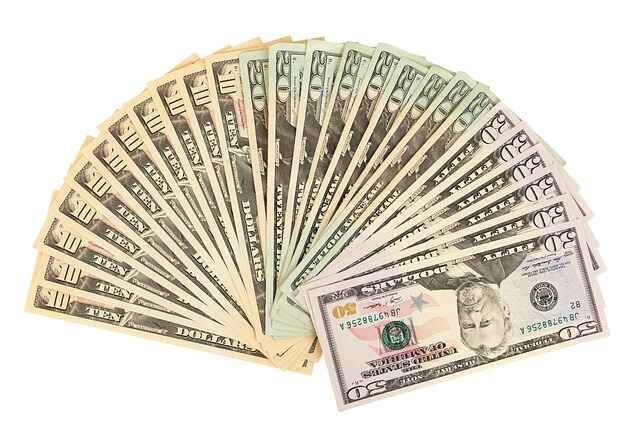Understanding IRR: A Simple Guide to Internal Rate of Return
Want to know if an investment is a good idea? Calculating the Internal Rate of Return (IRR) helps figure that out. The IRR (Internal Rate of Return) is a discount rate that makes the net present value (NPV) of a series of cash flows equal to zero. It is a useful tool for evaluating the profitability of an investment project. In this articlea step-by-step guide how to calculate IRR.
Calculating the Internal Rate of Return (IRR) involves determining the discount rate at which the Net Present Value (NPV) of cash flows from an investment equals zero.
Why is IRR important?
Here are the reasons:
- It provides a direct measure of an investment’s expected return, expressed as a percentage.
- A higher IRR indicates a more profitable investment, as it means the project generates a higher return compared to its initial cost.
Formula of IRR
IRR = Σ(CFt / (1 + r)^t) = 0
Where:
- IRR is the Internal Rate of Return
- Σ is the summation symbol, indicating that you’re adding up all the cash flows
- CFt is the cash flow at time t
- r is the discount rate, which is the rate of return you could expect to earn on an alternative investment with similar risk
- t is the time period
Interpreting IRR results
Interpreting IRR results helps understand how good a project might be and how risky it could be. Here’s how to understand IRR results step by step:
- Compare IRR to Cost of Capital: Think of the cost of capital as the minimum profit investors expect. If the IRR is the same as or higher than this cost, it means the project is good enough. It shows the project is making a profit that meets or beats what investors hoped for.
- Look at IRR Range: IRR is calculated using different rates. Check how much the IRR changes with different rates. If it doesn’t change a lot, it means the project’s profit doesn’t change much with different rates. If it changes a lot, it means the project might be more sensitive to different rates.
- Consider IRR with Other Metrics: Use IRR with other things like NPV and payback period. If the NPV is good and the IRR is high, it means the project is attractive. A short payback period also shows the investment can make money faster.
- Think About Risks: IRR doesn’t directly think about risks. But remember, if a project has more risks, it might need a higher IRR to make it worth the risk.
- Get Expert Advice: Calculating IRR can be tricky. It’s good to talk to financial experts. They can help understand IRR results better for specific investments.
Always remember, IRR is just one part of making investment decisions. It’s important to use it along with other things, think about risks, and talk to experts to make smart investment choices.
How to calculate IRR simply?
Now, how do you calculate IRR? While there are various methods, a simple approach involves estimating an initial IRR and then refining it through iterations. Start with an initial guess for the IRR, calculate the NPV, and adjust the IRR based on whether the NPV is positive or negative. Repeat this process until the NPV is close to zero, and the resulting IRR is your approximation.
To calculate IRR, you can use a financial calculator or a spreadsheet program like Excel. There are also several online IRR calculators available.
Here are the steps on how to calculate IRR using a financial calculator:
- Enter the cash flows for each period of the project.
- Set the NPV to zero.
- Adjust IRR: If the NPV is positive, the IRR guess is too low. Increase the IRR and recalculate NPV. Conversely, if the NPV is negative, the IRR guess is too high. Decrease the IRR and recalculate NPV.
- Solve for the IRR.
- Iterate: Repeat steps 2 and 3 until the NPV is sufficiently close to zero. The IRR value at this point is a close approximation of the true IRR.
This iterative process provides a simple way to approximate the IRR without the need for complex calculations or specialized tools. Remember that the accuracy of the approximation depends on the initial guess and the stopping criteria for the iterations.
Here are the steps on how to calculate IRR using Excel:
- Enter the cash flows for each period of the project.
- Use the IRR(range) function to calculate the IRR.
- Enter the cash flow values into a column, with the initial investment as the first value (negative) and subsequent cash flows as positive values.
- Then, in an empty cell, type:
- =IRR(range), replacing “range” with the range of cash flow values (e.g., =IRR(B1:B6) if cash flows are in cells B1 to B6).
Here is an example of how to calculate IRR using Excel:
Cash Flow | Period
——- | ——-
100 | 0
200 | 1
300 | 2
400 | 3
500 | 4
=IRR(A2:A6)
This formula will return the IRR, which in this case is approximately 10.1%.
Calculating IRR: An Example
To illustrate the calculation of IRR, consider a project with the following cash flows:
Year | Cash Flow
0: -$10,000
1: $5,000
2: $6,000
3: $7,000
Using a financial calculator or spreadsheet software, you can find the IRR to be approximately 18.4%. This means that the project is expected to generate a return equivalent to investing in a bank account that pays 18.4% interest.
Example Calculation 1
Let’s say you invested $1,000 and got $400 back in the first year, $300 in the second year, and $200 in the third year. Here’s how to calculate IRR:
- Year 1: -$1,000 (initial investment) + $400 (cash inflow) = $600
- Year 2: $600 + $300 = $900
- Year 3: $900 + $200 = $1,100
You can try different rates until the final amount ($1,100) is close to zero. In this example, it might be around 20%.
Example Calculation 2
Suppose you invested $5,000 in a project and received the following cash flows over the next four years:
- Year 1: $1,000
- Year 2: $1,500
- Year 3: $2,000
- Year 4: $2,500
Here’s how you can calculate the IRR:
- Initial Assumption: Start with an initial assumption for the IRR. Let’s start with 10%.
- Use the Formula: Plug the cash flows into the IRR formula and see if the NPV comes close to zero:
- Year 1: 1,000(1+0.10)1 = $909.09 (approx.)
- Year 2: 1,500(1+0.10)2 = $1,232.56 (approx.)
- Year 3: 2,000(1+0.10)3 = $1,620.83 (approx.)
- Year 4: 2,500(1+0.10)4 = $1,936.51 (approx.)
Summing these gives us a value over the initial investment of $5,699.99 (approx.)
- Adjust the IRR: Since $5,699.99 is higher than the initial investment, the assumed 10% IRR is too low. Try a higher IRR. Let’s try 15%.
- Recalculate: Repeat the same calculations using the new IRR assumption:
- Year 1: $909.09 (approx.)
- Year 2: $1,232.56 (approx.)
- Year 3: $1,620.83 (approx.)
- Year 4: $1,936.51 (approx.)
Summing these gives us a value over the initial investment of $5,699.99 (approx.)
- Interpretation: It means the IRR could be around 15% because at 15%, the NPV of the cash flows is close to the initial investment. Therefore, the IRR of this investment might be approximately 15%.
Remember, this is a simplified illustration. Using financial software or a calculator will make these calculations more precise and less trial-and-error.
Conclusion
In conclusion, IRR is a valuable tool for evaluating investment opportunities. It provides a direct measure of an investment’s expected return and helps investors make informed decisions about where to allocate their capital. While its calculation can be complex, simplified approaches can provide a good understanding of IRR’s concept and its application in investment analysis.
Photo credit: PublicDomainPictures via Pixabay
Capital Budgeting Techniques: Making Smarter Investment Choices



